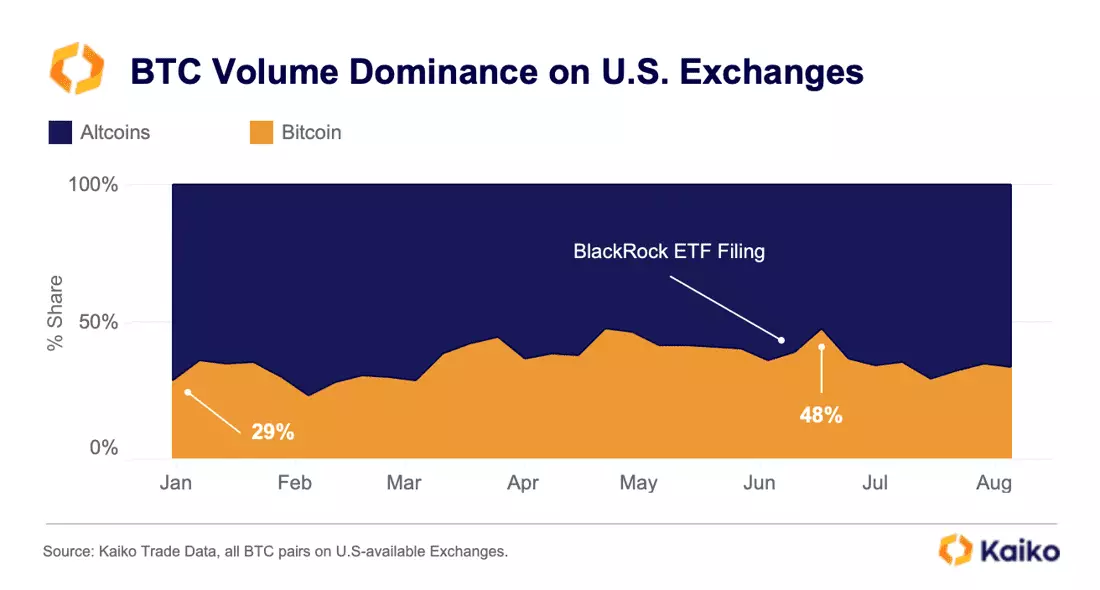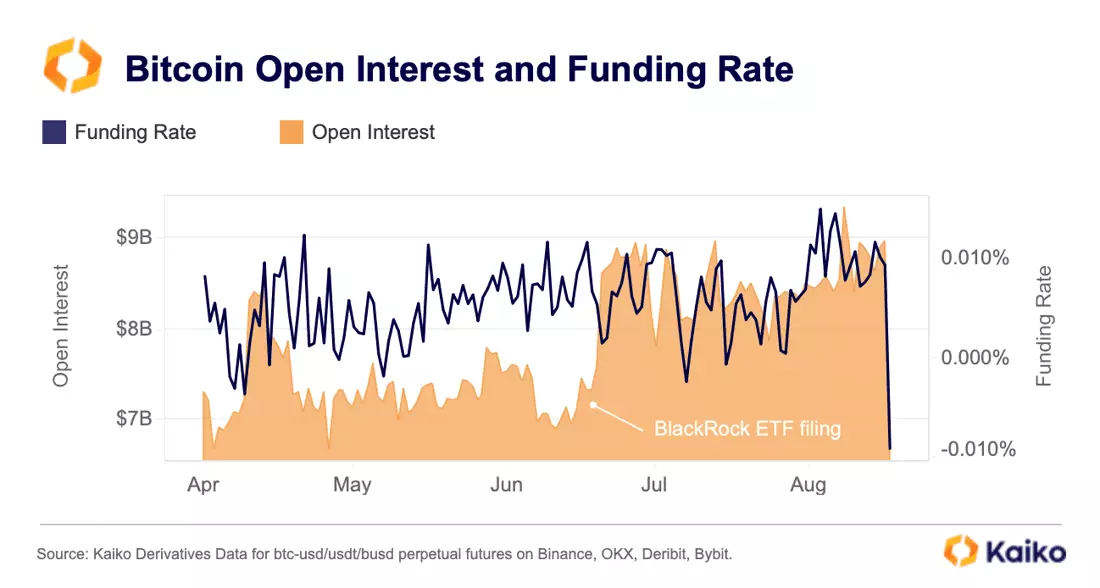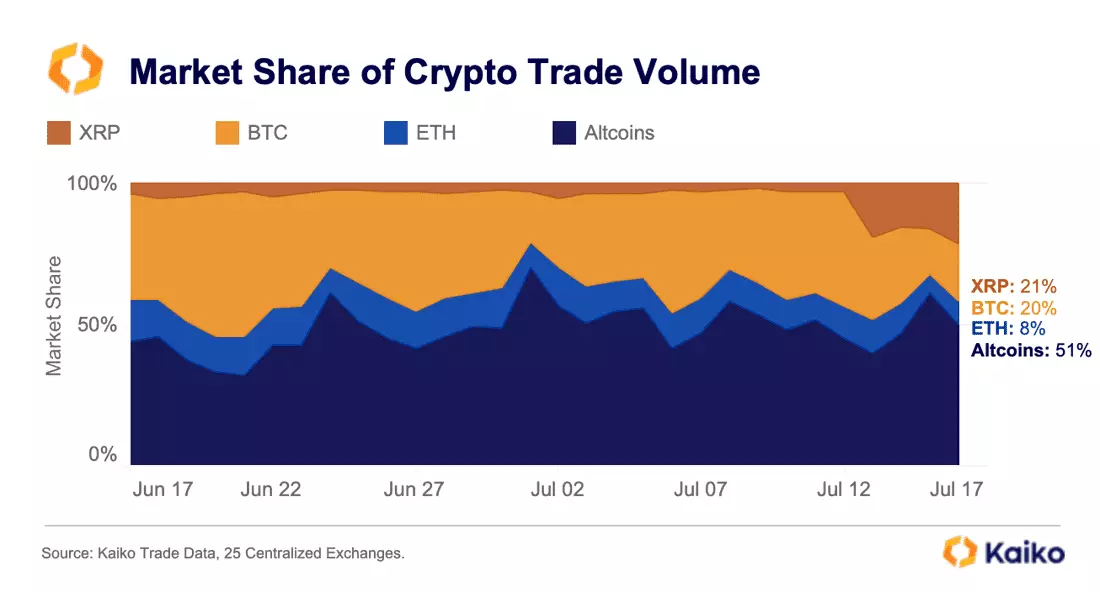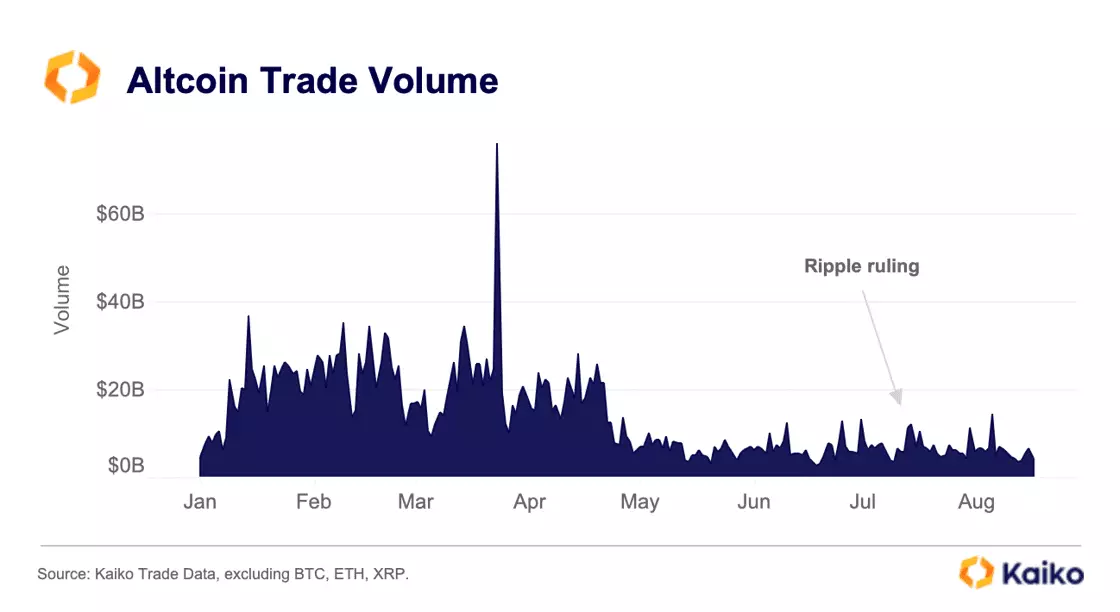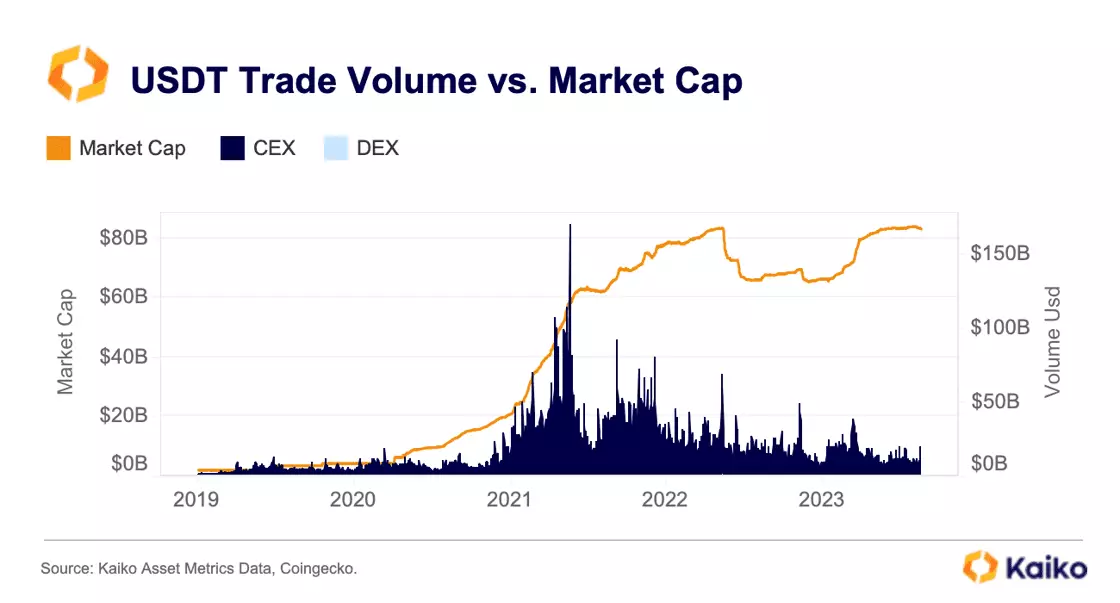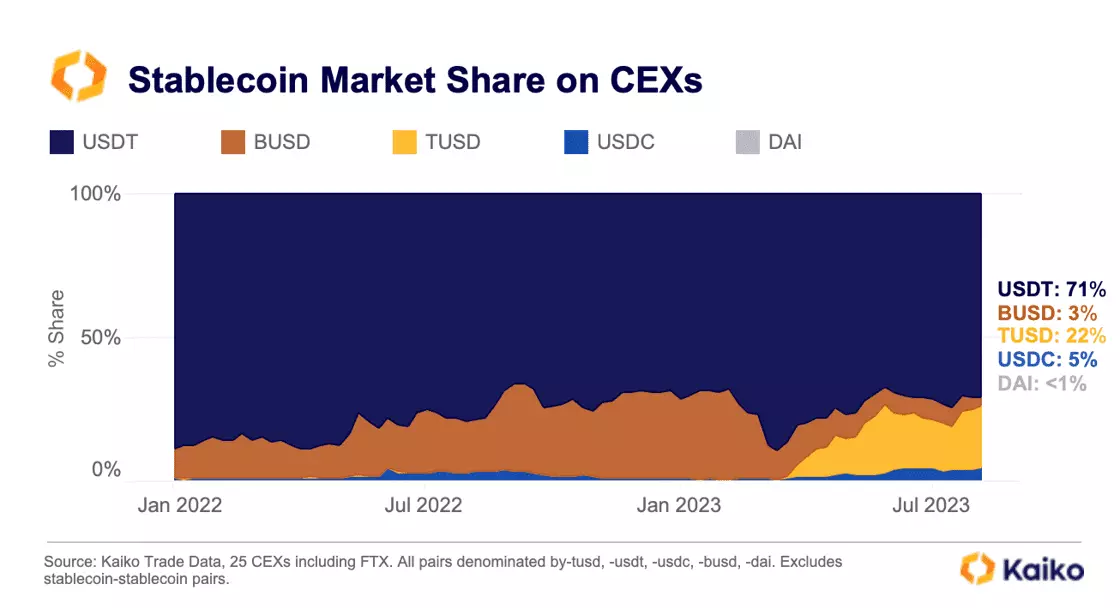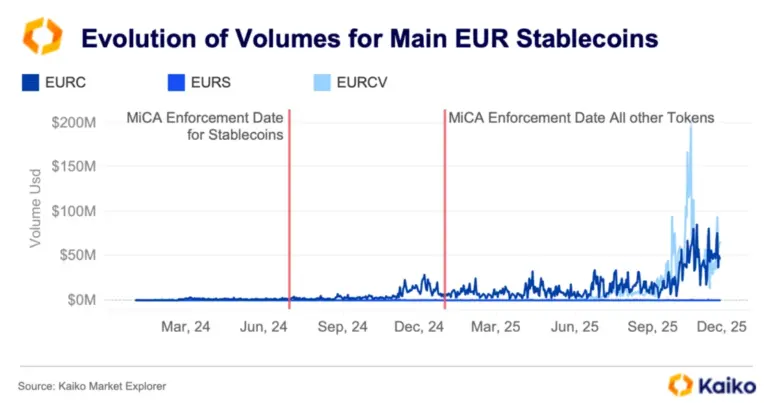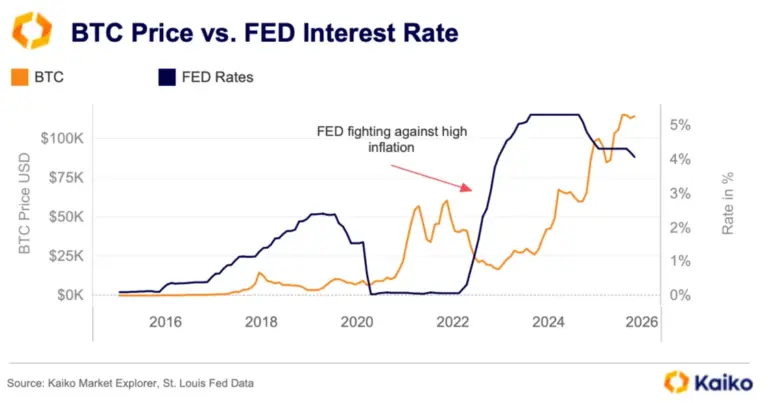Liquidity Remains at Multi-Month Lows
Exceptionally low liquidity, macro factors, and a flurry of bad news were among the drivers of last week’s flash crash, pushing BTC to its lowest level in months and spurring a wave of liquidations across derivative markets.
While BTC 2% market depth has stabilized over the past few months at around 5k BTC, it remains more than 50% below its pre-FTX highs. As BTC prices began falling towards $25k around 8pm UTC on August 17, market depth dropped 50% to just 2k BTC.
Kraken and Binance saw the strongest declines of 50% and 48%, respectively.
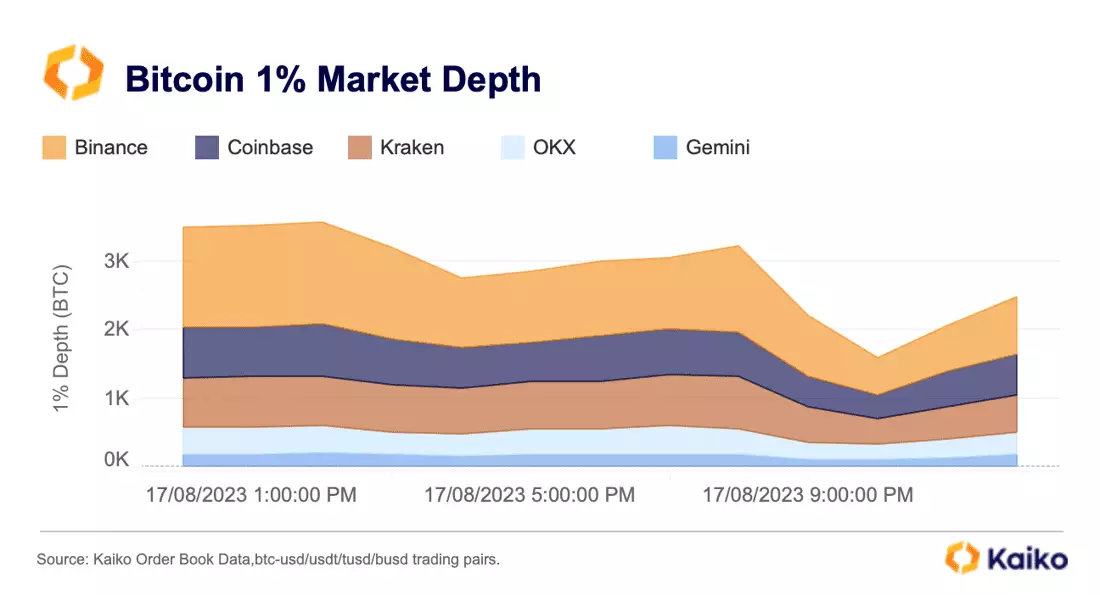
Market depth has become much more concentrated, with the top five most liquid venues accounting for 77% share in BTC and ETH market depth compared to 68% before the collapse of FTX. This could exacerbate price moves during periods of market turmoil.
On-chain liquidity looks worse. Since June, nearly $200mn has been removed from the 3pool and $800mn worth of tokens has been removed from the stETH-ETH pool. TVL stands at $225mn and $340mn, respectively. These pools have now vacated the top spot on Curve, now held by FRAX-USDC.
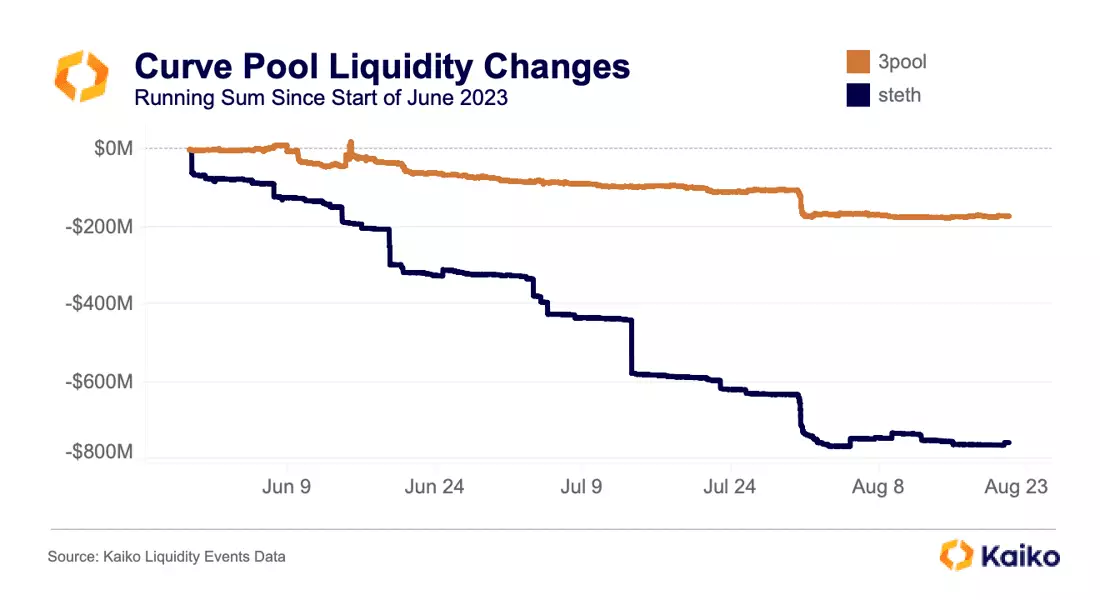
The 3pool’s decreasing liquidity, in combination with Tether’s redemption fee, it makes small depegs more likely. The stETH-ETH pool is shrinking because Lido DAO removed LDO token incentives from the pool. The DAO felt that, because stETH staking withdrawals have been enabled, having such a deep pool of DEX liquidity was no longer necessary. We explored this in a recent Deep Dive.
Binance Dominance Declines Following SEC Suit
In early June, Binance and Coinbase were each hit with lawsuits by the SEC, causing volatility and an altcoin sell-off. These allegations regarding Binance.US created an exodus from the exchange as both market makers and traders left en masse.
In the week after the lawsuit, Binance.US’s market depth fell by 80%. Its U.S. market share has collapsed from over 20% in April to below 1% as of early August.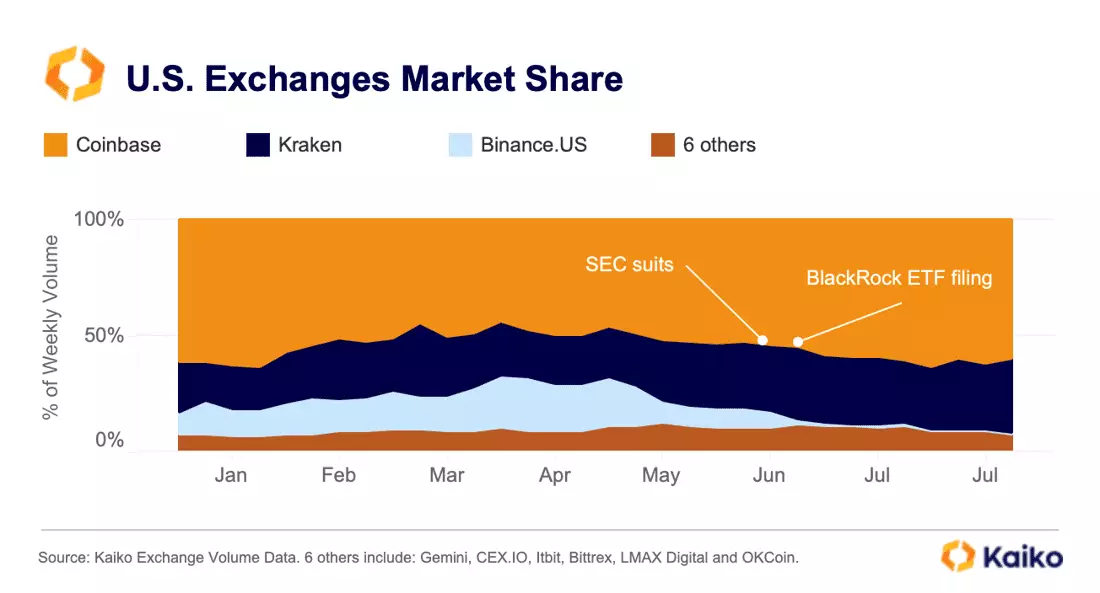
Despite the SEC lawsuit, Coinbase’s market share has increased to 60% as BlackRock and several other major asset managers chose it as their surveillance sharing partner in spot BTC ETF filings.
Binance global also faced increased regulatory pressures globally, withdrawing from Australia, the UK, and several other European markets.
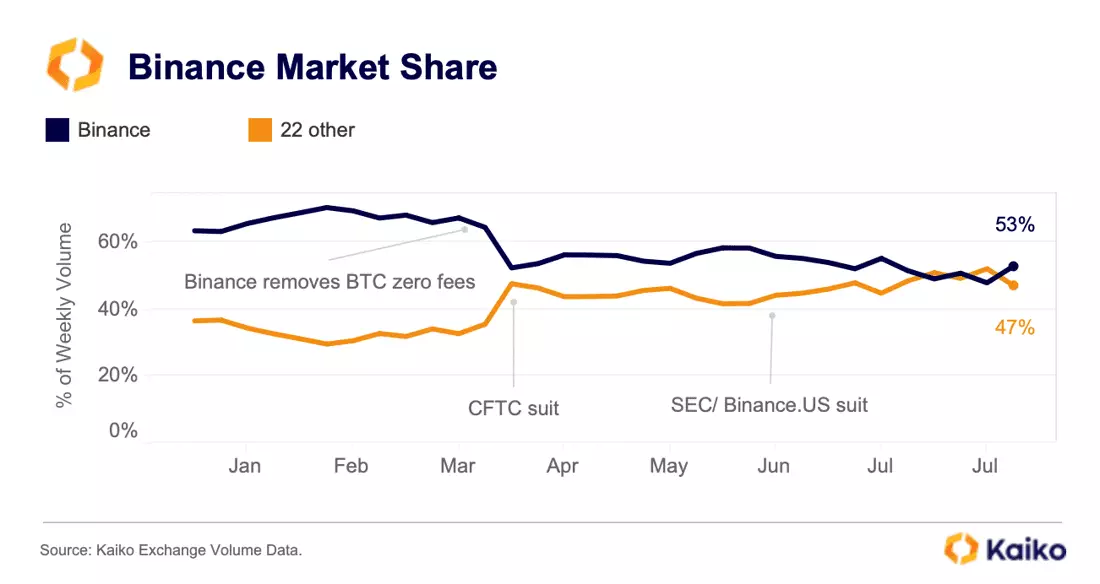
The exchange’s market share, which was already on a steady decline, fell to a yearly low of 48% in July. However, over the past two weeks, it has increased back to 53%, in large part due to a new round of trading fee promotions for TUSD and FDUSD pairs.
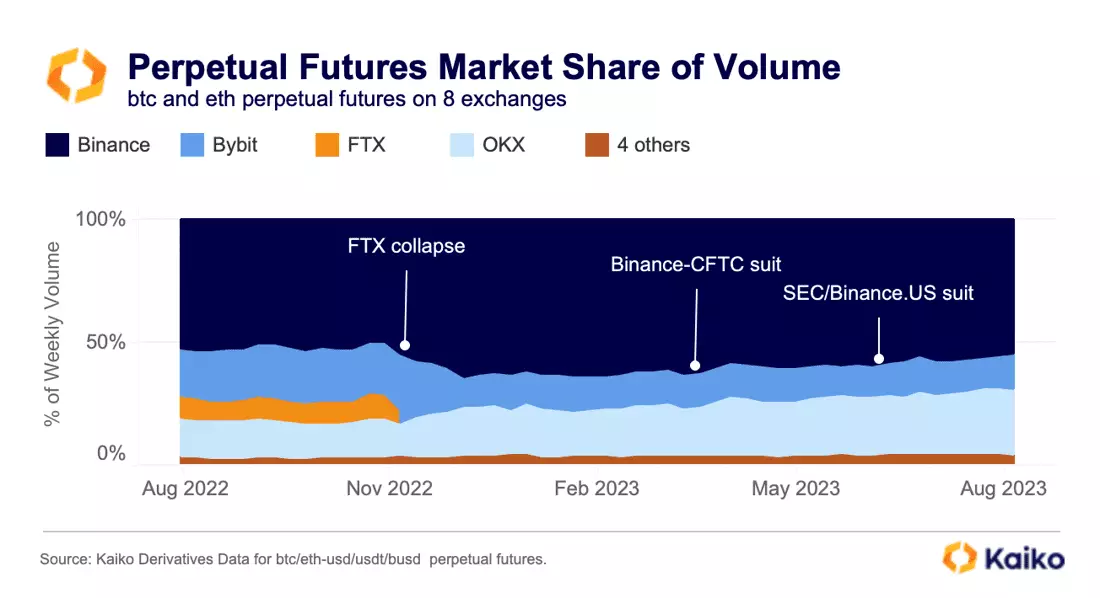
Binance’s market share of BTC and ETH perpetual futures trade volume also fell from 64% to 55% this year. The decline has been driven by outflows from ETH markets whereas increasing hedging inflows from miners have provided support to BTC markets. OKX was the main winner as its share has increased from 18% to 26%.


![]()
![]()
![]()
![]()








